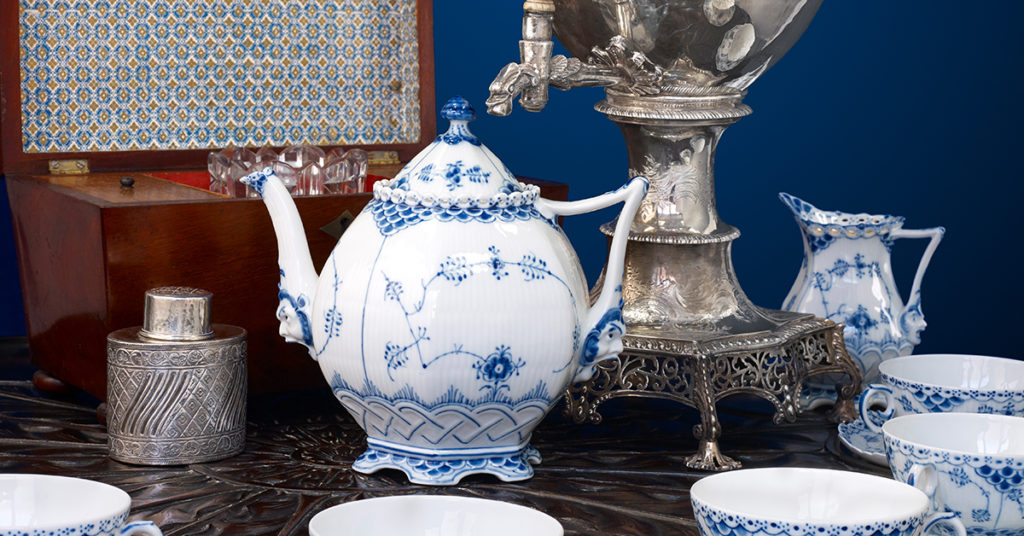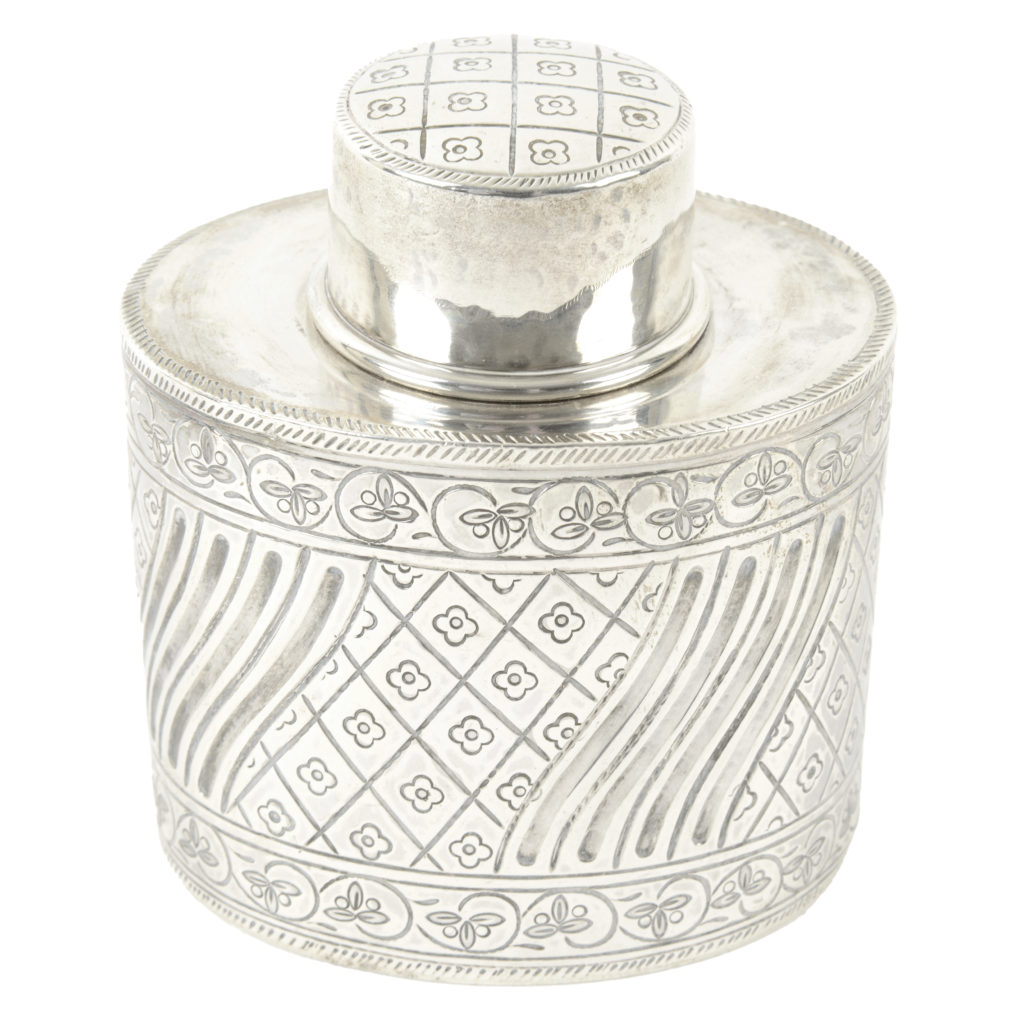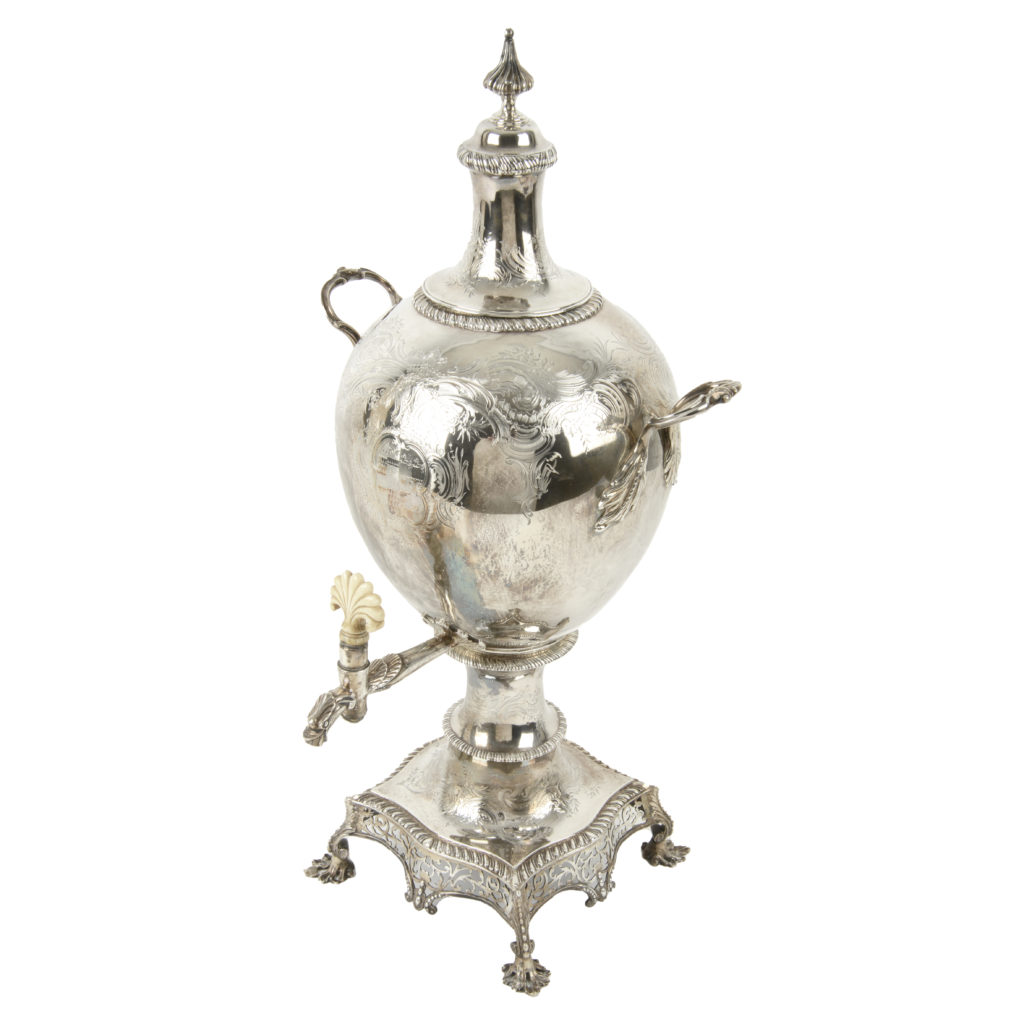
The History of Tea
According to Chinese legend, some 5000 years ago, the mythical Emperor Shen Nung discovered tea’s ability to provide ‘vigour to the body, contentment to the mind and determination to the purpose’. The eighteenth to nineteenth century saw Britain wield a bloody, international campaign, to sustain the availability of its’ domestic population’s favourite beverage. Tea’s contemporary reputation as a quintessentially English drink exposes the entanglement of English notions of politeness and tradition with colonial violence.
History of Tea: Growing Popularity
During the early 17th century, Portuguese and Dutch traders began to import black and green tea into Europe. By the time of 1657, the first orders of tea reached London. Queen Consort to Charles II, Catherine of Braganza, is credited with popularising tea at court. The introduction of this new beverage subsequently demanded the production of a vast array of new wares, for its preparation, service and consumption.
Chinoiserie porcelain tea wares became the height of fashion and were often altered by European craftspeople to suit Western tastes. The craze for predominantly blue and white designs from East Asia therefore influenced pioneering European porcelain manufacturers to emulate these patterns.
Lot 21 is an example of this phenomenon. Blue Fluted Pattern, inspired by East Asian wares, was the pattern from which Royal Copenhagen’s 248-year legacy was borne. This design was pre-dated by Meissen’s infamous and similarly inspired ‘Onion Pattern’ in 1731.
The eminence of these manufacturers demonstrates the debt they owe to Chinese craftsmanship and the lucrative nature of tea-related business. Indeed, these patterns were produced as England’s tea consumption rose from about 20,000 to almost 6 million lbs between 1700 to 1768.
History of Tea: Development of Tea Caddies and Wares
Lockable tea caddies and the production of silver tea wares, such as Lot 104, 323 and 344, attest to tea’s status as a luxury commodity, and tea consumption as a mark of social distinction. Caddy keys were traditionally kept by the mistress of the house, in order to prevent theft from even trusted servants.
As with sets of porcelain, impressive silver tea sets and associated objects were bought and used for social gatherings, such as newly popular tea parties. Tea wares functioned similarly to clothes, carriages and furnishings- to express wealth to those in the owner’s intimate proximity.
The Boston Tea Party
While tea was enjoyed as an integral element of sociability and leisure amongst England’s elite, Britain violently protected its interests throughout its Empire. The exorbitant taxation of tea exported to America led to protests in 1773. 342 chests of tea were subsequently thrown into the Atlantic, which was known as The Boston Tea Party. Afterwards, Parliament retaliated by shutting off Boston’s sea trade pending payment for destroyed tea. Tensions fuelled the eventual War of Independence.
Later, the East India Company’s refusal to meet China’s requests to trade for tea in silver bullion alone, and secretly trade in opium, led to Chinese authorities’ halting of Britain’s illegal dealings. After China seized approx. £2.6million worth of opium and banned trade, Britain declared what is now known as the first Opium War (1839-1842).
Meanwhile, reports of uncultivated tea in Assam, India diverted the East India Company away from dependence on Chinese trade. The inhumane system of tea plantation indenture that thousands of Indian workers were forced into by British colonial rule. This motivated many to support the campaign for Indian independence.
Similarly, Britain’s enslavement of around 3 million people to labour on sugar plantations, enabled and fuelled Britons’ taste for tea sweetened by sugar. Before enslavement across all British colonies was outlawed in 1830, British troops were regularly deployed to suppress enslaved peoples’ resistance against the depravity inflicted on them. In 1816, a quarter of Barbados’ sugar crop were burned before colonial powers overpowered freedom fighters.
Our upcoming Country House Auction and Silver and Plated Ware sale holds an array of tea wares, that, similarly to your morning cuppa or 4 pm caffeine kick, are all linked to a fraught history of how far Britain will go to ensure its population remain caffeinated and refreshed.
A Country House Auction | Tuesday 5th March 2024
Viewing times (ID required):
Birmingham
Friday 1st March 10:00-16:00
Monday 4th March 10:00-16:00
Tuesday 5th March 8:30-10:00
Silver & Plated Ware | Wednesday 6th March 2024
Viewing times (ID required):
Birmingham
Friday 1st March 10:00-16:00
Monday 4th March 10:00-16:00
Tuesday 5th March 10:00-16:00
Wednesday 6th March 8:30 – 10:00
Virtual viewings are available by request. Virtual viewings are the ultimate personal shopping experience. Using Zoom, you can ask us whatever you need to know in order to buy with confidence. Find out more here.
Valuations
Our valuations are free, with no obligation to sell with us. Our experts will value your item with an estimate, so you can find out what it could achieve at auction.
The process is simple. You can fill in a form online or book an appointment to visit either of our offices in Birmingham or London. Virtual valuation appointments are also available.
Find what you’re looking for
Make sure you don’t miss finding that special something by signing up to our email alerts. You’ll be the first to know when catalogues become available, receive invitations to special events and preview the hottest lots from our auctions, plus much more.
Why not use our free personal shopping service? Sign up for lot alerts and tell us exactly what you are looking for. Each time we upload a catalogue, we search for your keywords and email you lots matching your interests. Your personalised email will include images, lot descriptions and auction details.





